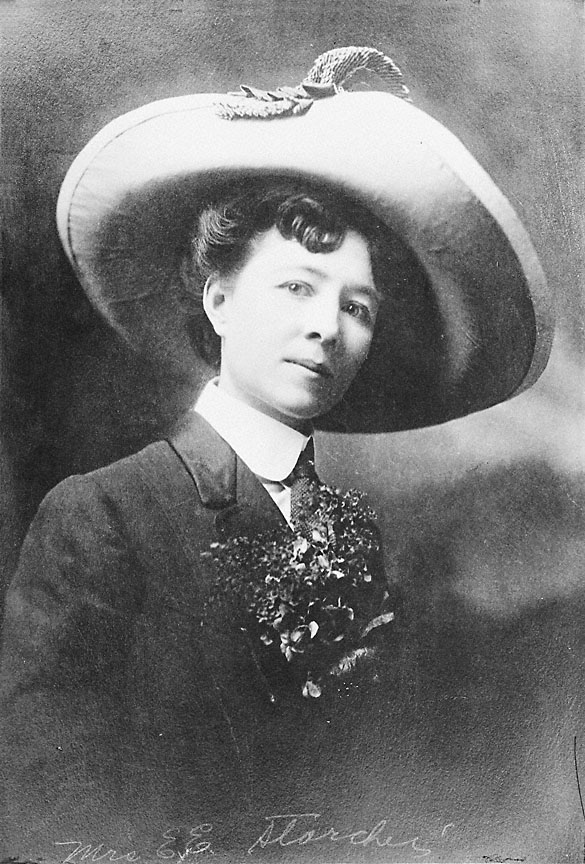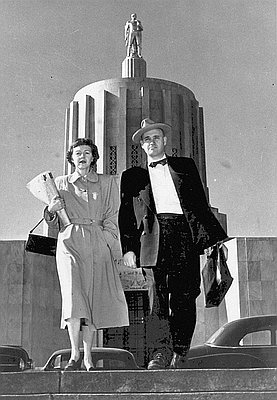This is a photograph of Laura Stockton Starcher, who was elected mayor of the town of Umatilla, Oregon, on December 5, 1916. She defeated the incumbent, her husband E. E. Starcher, by a vote of twenty-six to eight.
In addition to Laura Starcher, Umatilla voters also elected women to take over four town council seats and the posts of recorder and treasurer. Only two men retained elective office as town councilors. The wholesale change in the town’s leadership received state and national attention, with several commentators viewing the affair with amusement. However, when Starcher took office in January 1917, she announced that contrary to “many wild speculations” about “the so-called petticoat government . . . we will manage the affairs of this municipality and do it with a creditable manner without a shadow of a doubt.” The women’s election was the result of local historical developments and voting procedures particular to Umatilla. Since candidates did not have to announce their intention to run for office, voters simply wrote in their choice for the various positions on the secret ballot. The women of Umatilla organized for the 1916 election out of dissatisfaction with the town council, which had reduced city services and failed to address local economic issues. Two of the leading town politicians, E.E. Starcher and C. G. Brownell, later explained that they had no prior knowledge of their wives’ political plans—Mrs. C. G. Brownell was elected to the town council.
Upon taking office in January 1917, Starcher and the four other women elected to the town council—Gladys Spinning, Anna Means, Florence Brownell, and Stella Paulu—inaugurated a program of progressive action. Over the next four years, the council improved water and electrical services, approved funds for street and sidewalk projects, and organized city “Cleanup Weeks.” Additional accomplishments included new railroad crossing signs, the founding of a town library, replacement of the city’s American flags, institution of monthly garbage collection, planning for future community projects, and the appointment of a city health official during a 1918 smallpox epidemic. Although some of the women left office after serving only a portion of their terms, several women remained in office through 1921. Laura Starcher served a total of eight months of her two-year term, leaving office for health reasons. Stella Paula was elected mayor in 1918. When the original cohort of women elected in 1916 finally decided to leave office, no new women came forward to take their places. As a result, the election of 1920 returned an all-male city government.
Further Reading:
Wallace, Shelley Burtner. “Umatilla’s ‘Petticoat Government,” 1916-1920.” Oregon Historical Society 88,1987: 385-402.
Kessler, Lauren. “A Siege of the Citadel: Search for a Public Forum for the Ideas of Oregon Woman Suffrage.” Oregon Historical Quarterly 84, 1983: 117-149.
Kessler, Lauren. “The Ideas of Woman Suffrage and The Mainstream Press.” Oregon Historical Quarterly 84,1983: 257-275.
Written by Melinda Jette, © Oregon Historical Society, 2003.

